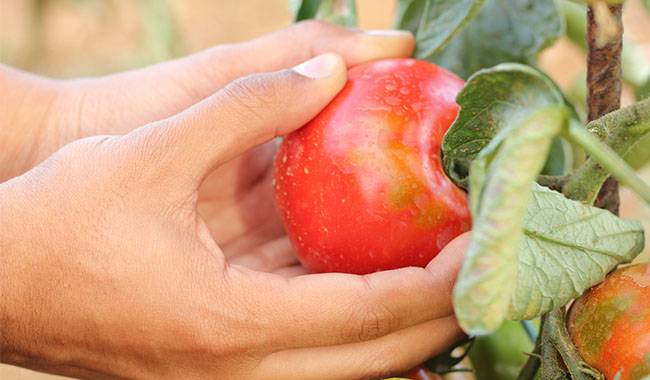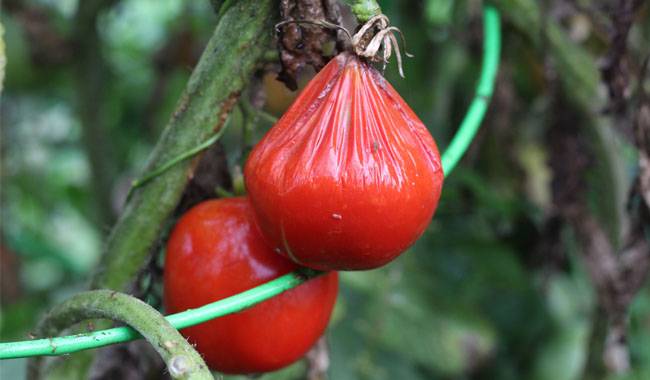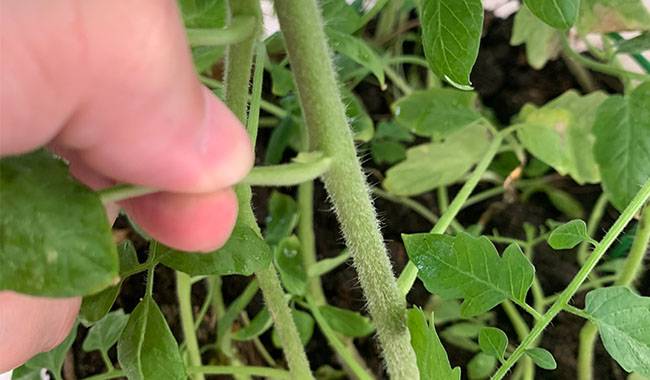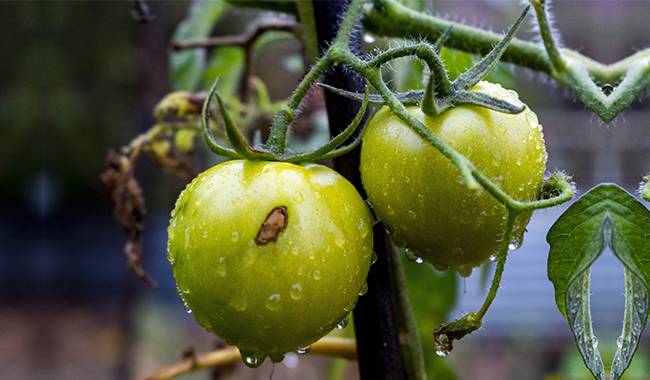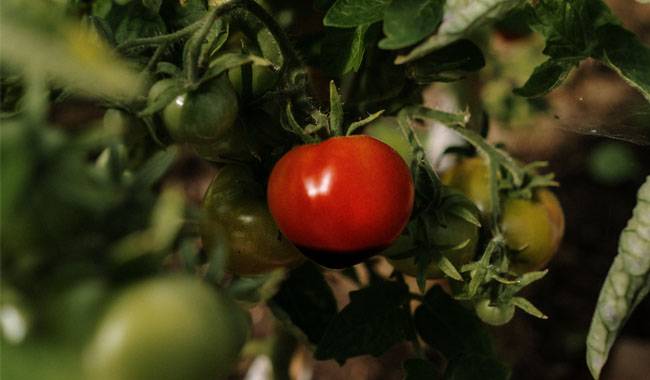
Tomatoes are one of the most common vegetable crops in our gardens. Not only does this crop grow well in the open ground, but it also does well in protected areas, as this allows for an earlier tomato harvest.
Although the care of the plants is not difficult and the yields are often high, gardeners are often faced with problems like Tomato end rot.
This disease can cause considerable damage to the crop. Therefore, we will talk about the Tomato end rot problem today.
TOMATO END ROT CAUSE
This disease is very active in both greenhouses and open fields and can cause serious damage to crops.
It can affect tomatoes due to poor growing techniques. Most commonly, Tomato end rot occurs due to high temperatures outside windows or overheated air in the greenhouse.
As the temperature rises, the tomato plant begins to evaporate as much water as possible from the surface of the leaves and the trunk of the plant.
If the gardener does not realize in time that temperature is critical and that the plants are being affected by it and do not begin to moisten the soil by supplying water to the plants through the root system, they will begin to absorb water from the fruit, which by then has already begun to actively form.
This, in fact, the unnatural process will lead to the fact that the vast majority of tomato fruit cells will simply die and the tomato end rot of this plant will begin to develop actively.
Curing it is quite problematic, but preventing the appearance of this disease is much easier.
But these are not all the causes of Tomato end rot. Due to the excess or lack of calcium in the soil, a large amount of nitrogen in the soil, and – if the soil is very acidic – this disease can develop and become active very quickly.
HOW DO I UNDERSTAND THAT TOMATOES ARE INFECTED?
In order to start treating tomatoes, it is necessary to understand the first and usually most important signs of Tomato end rot. In most cases, root rot affects the third or second brush of unripe fruit.
Usually, the problem can be detected by paying attention to the top of the fruit, where you can even see completely flat or slightly depressed areas with the naked eye.
At first, when the spots are not very large, they are dark green in color, and as the disease develops strongly, respectively as the spots grow, they turn grayish-brown in color, and once the spores are mature and ready to fly away, they turn black in color.
Once the fruit is infected with root tip rot, its growth immediately slows down and it begins to deform. It only takes a few days for the skin of the fruit to start drying out and then cracking.
At this point, these cracks and penetrate, and the rot infection begins to develop actively there. Usually settled in the crack fungus genus “Alternaria”, their livelihood causes the flesh of tomatoes to turn literally black and begin to rot rapidly.
Interestingly, tomato fruits affected by Tomato end rot usually develop their color (ripeness) faster than their healthy counterparts, but they shatter to the ground immediately after ripening.
Such fruits should not be eaten fresh or used in processed products, even if you cut off the affected areas of the fruit, and certainly do not select seeds from them to continue sowing the following year.
HOW DO I TREAT TOMATO END ROT?
If preventive measures do not help and tomatoes are infected with Tomato end rot, the first thing to do is to remove all affected tomatoes and burn them. Infected leaves and shoots should also go into the oven.
As far as dealing with Tomato end rot in the greenhouse and in the open field, there is no fundamental difference here. In most cases, once the soil and then the plant is saturated with large amounts of calcium, the development of Tomato end rot slows down considerably and then stops altogether.
Rapid saturation of tomato plants with calcium can be accomplished by foliar sprays, for which calcium sulfate is best used. This fertilizer does not contain harmful chlorine and it is easily soluble in water.
Therefore, simply pour a teaspoon of this fertilizer into a bucket of water, mix everything thoroughly, fill the sprayer and treat the plant, trying, of course, to hit the affected fruit first, but do not forget about the rest of the plant.
By the way, this treatment should be done at night, and if it rains during the day, the treatment should definitely be repeated the next night.
If you want to maximize the flow of calcium in the plant, then you can add a little common boric acid to the solution, for example, for a 10-liter solution you need only 9 grams of boric acid.
To completely get rid of tomato end rot in tomatoes, one treatment is certainly not enough, they need to be done once a week, combining foliar sprays with a lot of watering of the soil under the roots.
There are also quite effective folk remedies to combat Tomato end rot, such as treating tomato plants with extracts of wood ash or soot.
To do this, a full cup of wood ash or soot should be poured into a larger container with one liter of steeply boiling water and left to stand for 24 hours, then filtered and diluted 10 times with water. It is recommended to add 15 grams of soda to the solution and treat the plants with this mixture every week.
PREVENTION OF TOMATO END ROT
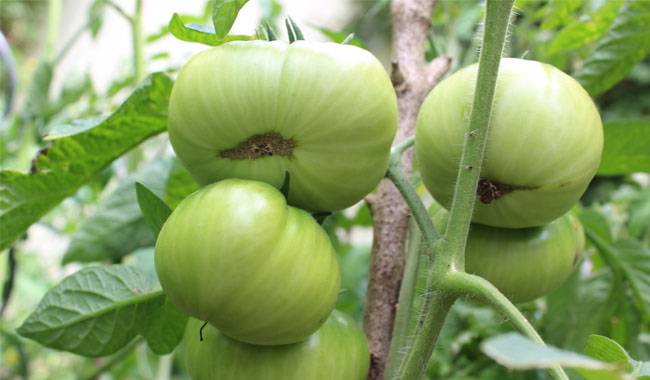
Preventive measures are involved in any disease, and here Tomato end rot is no exception. Prevention is much better than the use of drugs. The complexity of preventive measures is quite extensive, it begins with the preparation of seed material sown in the ground and ends with the harvesting of tomatoes.
But before you start treating the seeds with proper methods, we recommend that you purchase new varieties that are resistant to pests and diseases, including drought and excessive moisture.
Buying varieties with early ripening, large fruits, and the greatest growth vigor will put you at the greatest risk, as such plants require more nutrients and have larger fruit surfaces that are more likely to develop even a small crack.
Now to the sterilization of seed material: usually tomato seeds are corroded in a solution of “manganese” or iron alum.
It is better to prepare a stronger solution of manganese – it is recommended to make a 2.5-3% solution of this “drug”, then place the seeds in a gauze bag and keep them in the solution for 30 minutes.
After this time, the tomato seeds should be rinsed under running water for a few minutes and dried.
If you choose the composition of iron alum, then dilute it in the following proportions: first, one gram of the drug should be diluted in one liter of water, then the seeds should be placed in a gauze bag in this composition for a day, and then, without washing the seeds with water, bring them to a loose state (by drying).
PRECAUTIONS RELATED TO GROUND PREPARATION
In order to prevent a possible rot attack, which would lead to the formation of top rot of the tomato fruit, it is necessary to adequately lime the soil with chalk or dolomite powder, or even caustic lime – as you know, the latter reduces the acidity of the soil perfectly.
For each square meter, you need 50 grams of chalk, 300 grams of dolomite powder, or 200 grams of lime.
Then, when planting the tomato seedlings into the ground, already put half a cup of wood ash or charcoal in each hole.
THE ROLE OF WATER IN THE PREVENTION OF TOMATO END ROT?
Prevention is not only the introduction of the right elements into the soil or seed mixes but also such simple measures as watering, though, in time and correctly. In fact, in the case of drought, the roots of tomato plants stop absorbing calcium and lack it, hence all the trouble.
Gardeners notice an interesting feature: tomato plants absorb calcium better at night, so watering is always done at night, and that night the plant should be poured on calcium in the ground.
Moreover, even in the morning, there is still water in the soil, and after each watering, it is necessary to cover the top layer (several inches of layers) with hummus.
CONCLUSION
Therefore, if your tomatoes getting rot, then you should never panic. We have given comprehensive answers as to where it appears from, how to avoid it and how to fight it with chemical way.
Now Tomato end rot is certainly not something to fear for you, or the tomatoes growing on your patch.




